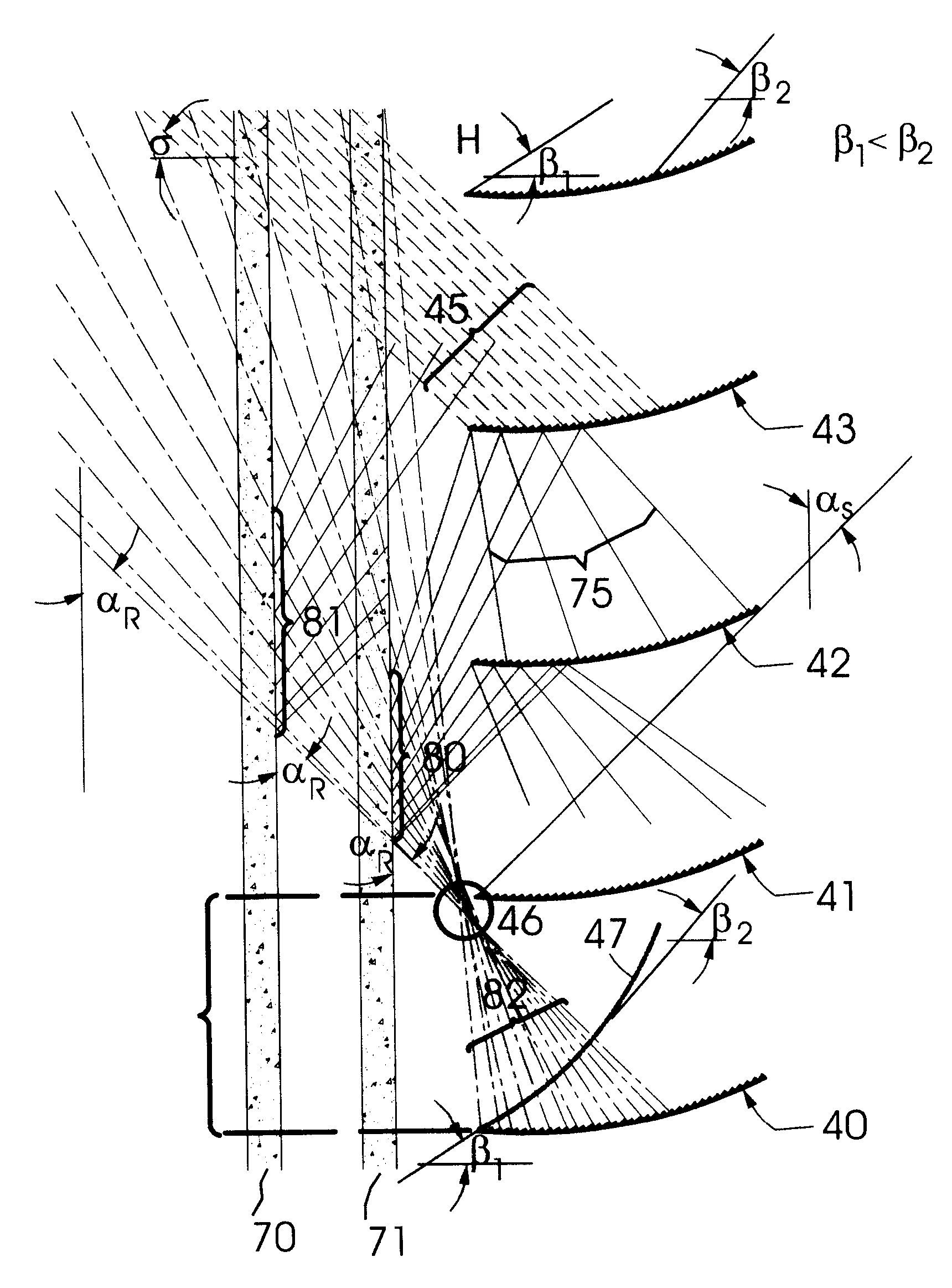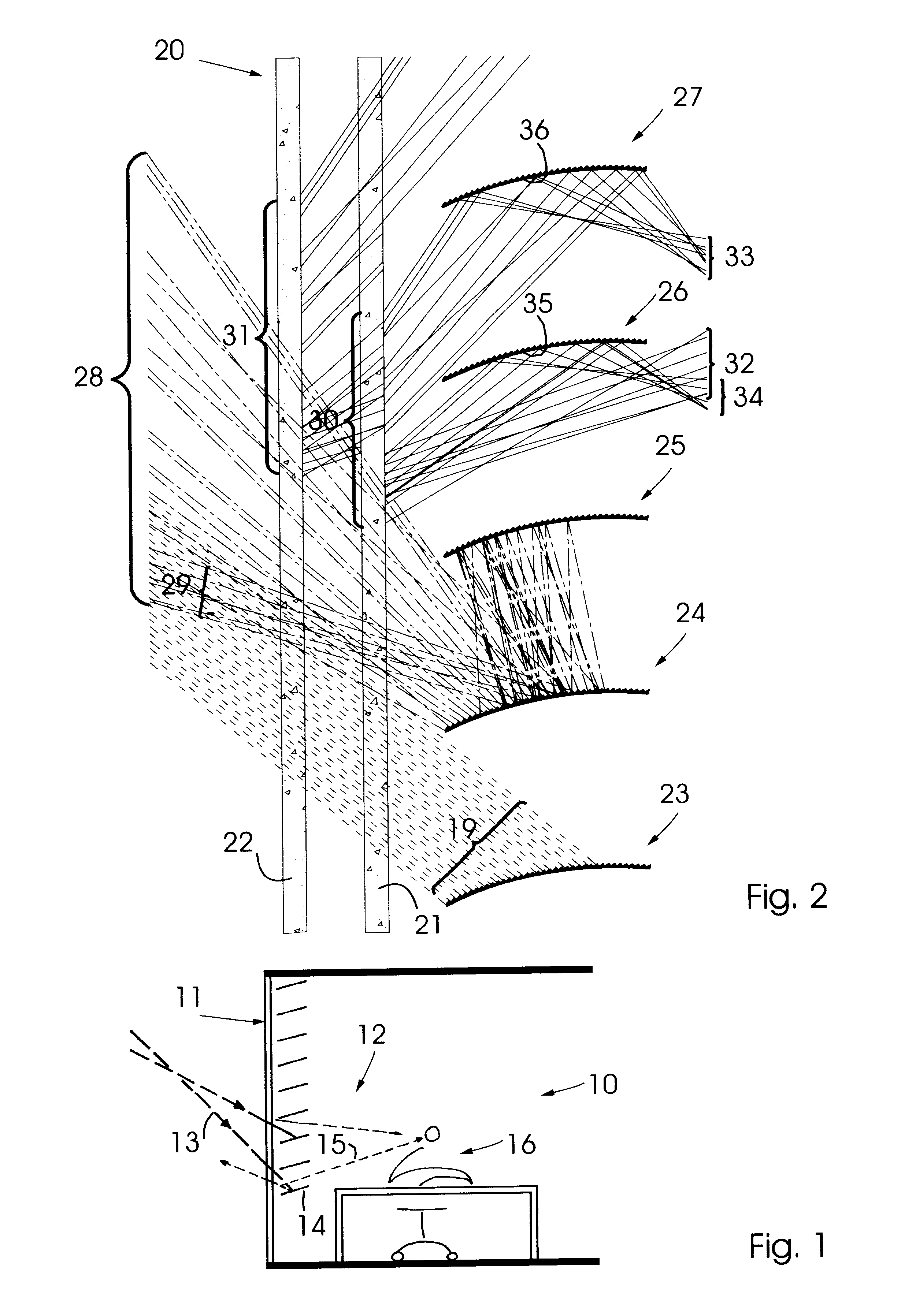Toothed daylight blinds
a technology of blinds and guiding rods, applied in the direction of lighting and heating equipment, building components, constructions, etc., can solve the problems of neither overheating nor glare by the panes, and achieve the effect of excluding glare in the outer panes
- Summary
- Abstract
- Description
- Claims
- Application Information
AI Technical Summary
Benefits of technology
Problems solved by technology
Method used
Image
Examples
Embodiment Construction
analysis of the ray paths for the innovative light guiding blinds in operable blind positions.
[0018]FIGS. 5, 6, and 7 show further exemplified embodiments of the blinds of the invention.
[0019]FIG. 8 shows an innovative production process of microstructuring by coating with sol gel.
[0020]FIG. 9 shows an enlargement of a microstructurated surface.
DETAILED DESCRIPTION OF THE INVENTION
[0021]FIG. 1 shows, as known from the prior art, the cross section through an interior space 10 one side 11 of which is glazed. Behind the glazing, a daylight guiding venetian blind having reflective surfaces 12 is arranged. The problem is explained based on ray path 13. Inciding light radiation impinges on blind 14 and is retro-reflected by it into glass faced 11. In glass facade 11, a reflection is generated which, as shown by ray path 15, produces glare in the eye of observer 16. All prior-art retro-reflective blind structures having reflective upper sides, even prismatic retro-reflectors, show glare ef...
PUM
 Login to View More
Login to View More Abstract
Description
Claims
Application Information
 Login to View More
Login to View More - R&D
- Intellectual Property
- Life Sciences
- Materials
- Tech Scout
- Unparalleled Data Quality
- Higher Quality Content
- 60% Fewer Hallucinations
Browse by: Latest US Patents, China's latest patents, Technical Efficacy Thesaurus, Application Domain, Technology Topic, Popular Technical Reports.
© 2025 PatSnap. All rights reserved.Legal|Privacy policy|Modern Slavery Act Transparency Statement|Sitemap|About US| Contact US: help@patsnap.com



